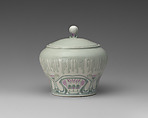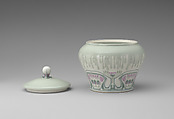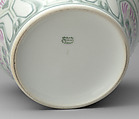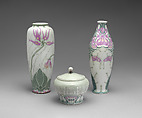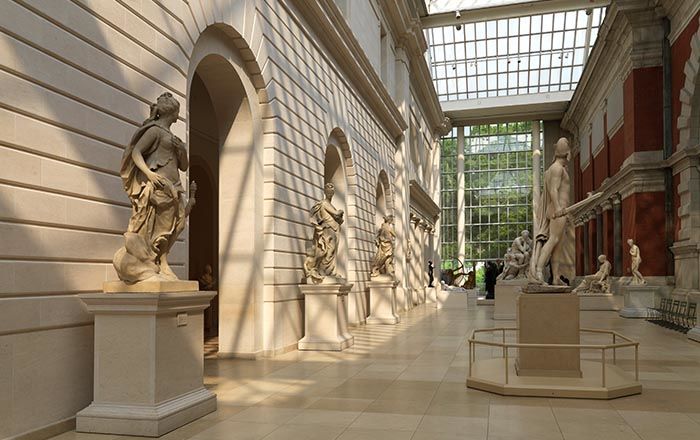Bonbonnière
Designer Georges de Feure French
Manufactory Gérard, Dufraisseix, Abbot French
Not on view
Art Nouveau ceramics, produced from around 1880 to 1914, the start of World War I, encompassed a variety of different styles and influences, including national historicism, nature, symbolism, and an interest in Japanese culture. The period’s diverse practitioners were driven by the search for new forms that responded to the sweeping social, cultural, economic and artistic changes wrought by industrialization at the end of the nineteenth century and the advent of World War I. Georges de Feure was a prolific painter, theater designer, and industrial designer who produced a number of designs for the Limoges manufactory of Gérard, Dufraisseix & Abbot. This bonbonnière combines the sinuous, floral patterns of Art Nouveau designs seen in de Feure’s other work, combined with the dynamic drips of the celadon-colored slip on the lid and upper part of the vessel. Many of the artist’s designs reveal the influence of Siegfried Bing, a dealer and gallerist behind the Maison de l’Art Nouveau who was a champion of Japanese art.
This image cannot be enlarged, viewed at full screen, or downloaded.
This artwork is meant to be viewed from right to left. Scroll left to view more.
